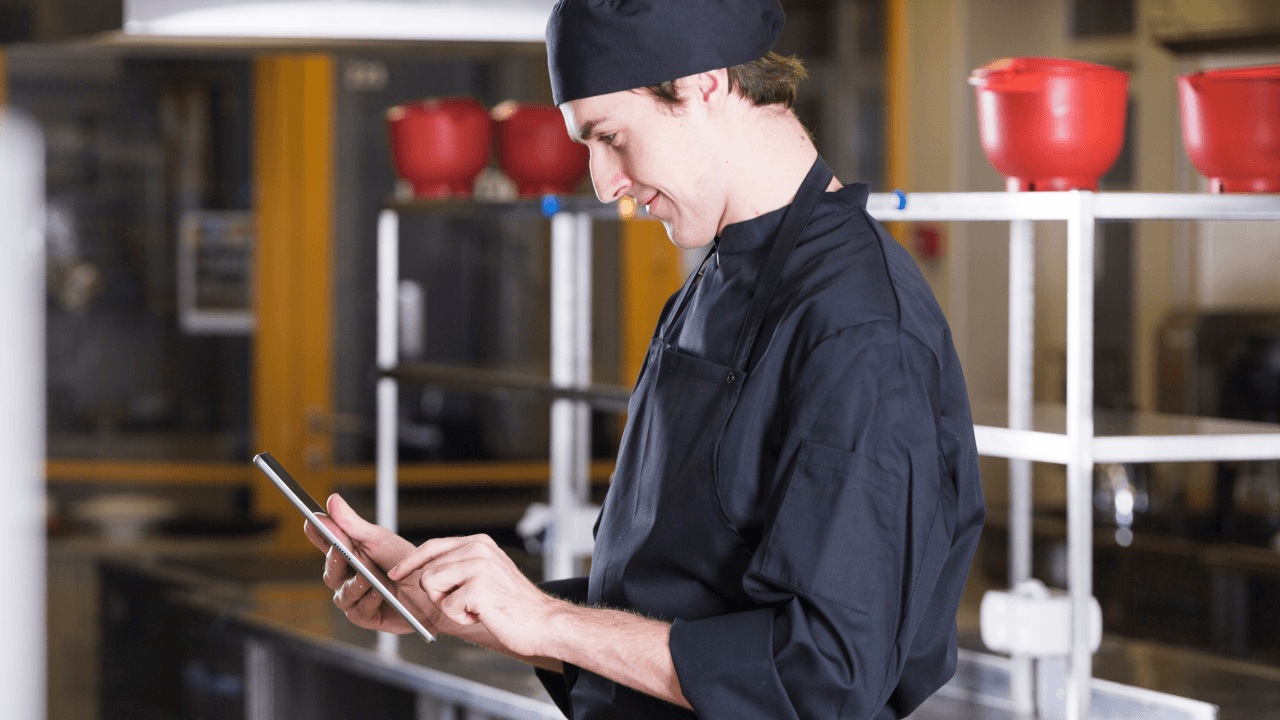- Key Features And Benefits
- How Does An Order Management System Work?
- Choosing The Right Order Management System
- Manage Your Restaurant Orders Better With Orders.co
What is a Restaurant Order Management System, and Why Do You Need One?
Running a successful restaurant involves juggling various tasks simultaneously, from taking customer orders to managing inventory and ensuring timely delivery.
This complexity increases with the adoption of online ordering and multiple delivery platforms.
Despite the difficulties, online ordering is rewarding for restaurants, as every year, 60% of orders are placed via mobile apps, where customers spend 20% more per purchase compared to in-store purchases.
A restaurant order management system (OMS) is a digital tool that streamlines these processes.
It serves as a central hub for selling food online, handling orders from various channels, and seamlessly integrating into restaurant operations.
Key Features And Benefits
Most restaurant order management systems offer core functionalities like order taking, real-time order processing, and choosing the most suitable driver.
Some may include additional features like menu management, customer information handling, and integrated payment processing, which vary depending on restaurants’ specific order management system.
Here’s a look at some of the core features and benefits of the best online ordering systems for restaurants:
- Streamlined Operations: A restaurant order management system centralizes order processing by consolidating orders from multiple channels (e.g., orders from your own online food ordering system, in-house orders, and third-party delivery apps), reducing manual effort and the risk of errors.
- Improved Customer Satisfaction: With accurate and faster order processing, customers receive their orders quickly and correctly, enhancing their overall dining experience. A well-managed restaurant order management system can also efficiently handle customer-specific requests, further improving satisfaction.
- Increased Efficiency: Automating routine tasks like order entry, payment processing, and inventory checks allows restaurant staff to focus more on customer service and kitchen operations. This increased efficiency can lead to higher customer turnover and reduced waiting times.
- Enhanced Inventory Management: With real-time updates on the most wanted dishes, restaurants can manage their inventory based on the products needed. They can also ensure that out-of-stock items are flagged instantly, preventing customers from ordering unavailable dishes.
- Integration with Third-Party Delivery Services: A restaurant order management system, such as Orders.co, integrated with third-party delivery platforms like Uber Eats, DoorDash, and Grubhub allows seamless order processing. It consolidates all orders into one system, reducing the need to monitor multiple tablets or devices, thereby improving workflow and minimizing errors.
Also, read: How to partner with a food delivery app?
How Does An Order Management System Work?
An OMS oversees the entire order lifecycle, from order placement to delivery. Here’s how it typically works:
- Order Capture and Processing: When a customer places an order, the restaurant order management system captures the order details, verifies the payment, checks inventory, and relays the information to the kitchen—all in real time. This automation ensures quick and accurate order processing, minimizing the chance of human error.
- Integration with Third-Party Delivery Services: The order management systems for restaurants integrate with major delivery services, allowing orders from various delivery channels to be managed from a single dashboard. This integration enables seamless data synchronization and efficient order management across multiple platforms.
- Menu Management and Optimization: An OMS helps optimize menu offerings by identifying popular dishes and peak ordering times using data collected from customer orders. Real-time menu updates ensure that customers always see the current options, avoiding the disappointment of ordering unavailable items.
Choosing The Right Order Management System
When selecting a restaurant order management system for your restaurant, consider the following factors:
- Scalability: Ensure the OMS can grow with your restaurant business, accommodating increased order volume and additional locations.
- Ease of Use: Look for a system with a user-friendly interface that minimizes the learning curve for staff.
- Integration Capabilities: Verify that the OMS integrates seamlessly with existing systems, such as POS systems and third-party delivery apps.
- Support and Training: Choose a provider with robust customer support and training to help your team maximize the system’s capabilities.
- Industry-Specific Features: Consider features that add value to your restaurant’s operations, such as detailed sales reporting, real-time inventory management, and menu optimization tools.
- Order Consolidation: Opt for an OMS that can consolidate orders from multiple third-party delivery platforms into a single platform, simplifying restaurant order management and reducing errors.
Manage Your Restaurant Orders Better With Orders.co
Investing in the right restaurant order management system is crucial for restaurants aiming to achieve operational excellence and exceptional customer service.
Orders.co’s order consolidation and menu management feature is one of the most powerful tools offered to drive restaurant growth.
This feature streamlines online order management by integrating multiple third-party delivery platforms into a single, easy-to-use dashboard, eliminating the need for multiple tablets or devices.
By consolidating all incoming orders from platforms like UberEats, DoorDash, and Grubhub into one central device, errors and delays that often arise from managing separate systems are minimized.
In addition to order consolidation from third-party delivery platforms, Orders.co’s solution enables staff to view, accept, and manage orders from restaurants’ own ordering website, significantly improving order accuracy and processing speed.
The platform also provides comprehensive reporting and analytics, offering insights into sales performance and customer preferences. This helps restaurant owners make informed, data-driven decisions.
The feature’s enhanced menu management capabilities allow for quick and easy updates to menu items, prices, and availability across all connected platforms from a single interface.
This ensures menu consistency, prevents customers from ordering out-of-stock items, and keeps offerings current.
Schedule a demo to see Orders.co’s features are explicitly designed for restaurant growth, optimizing operations, and driving success.



